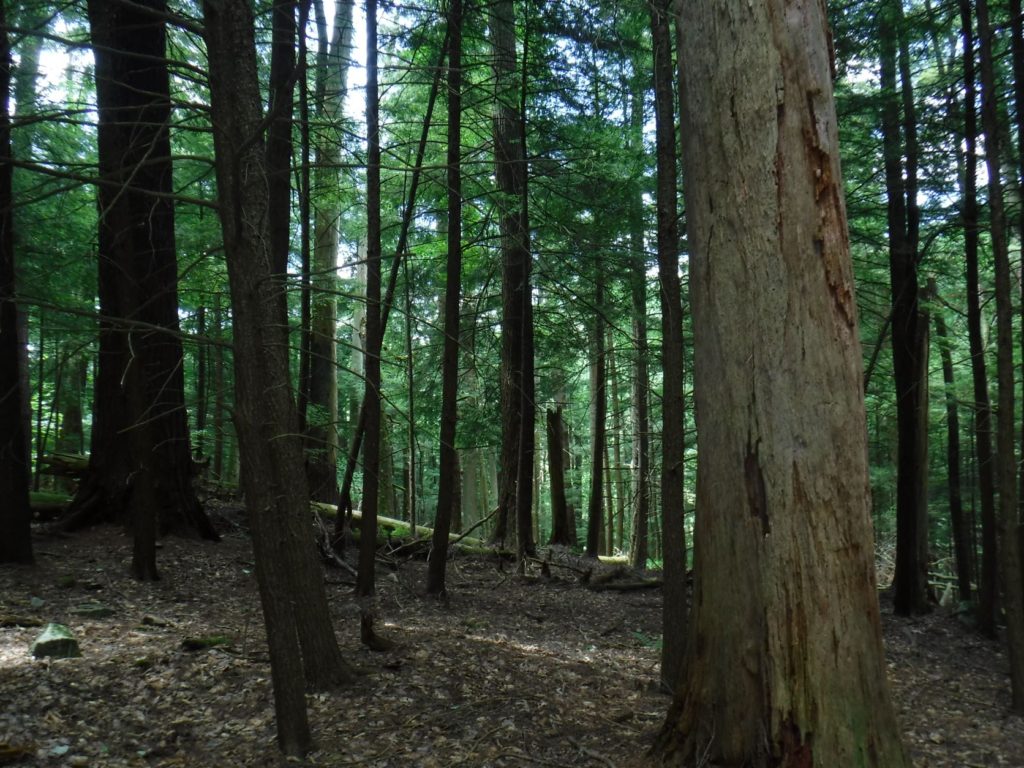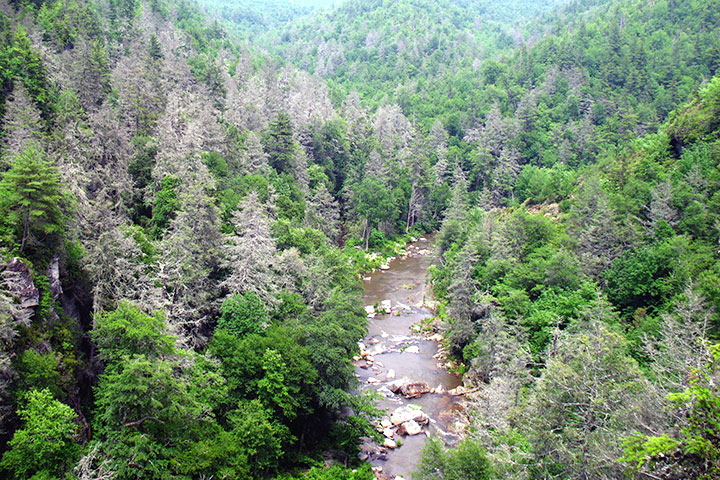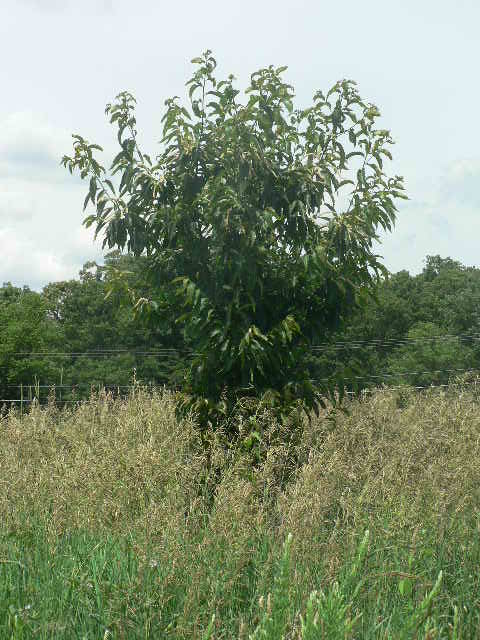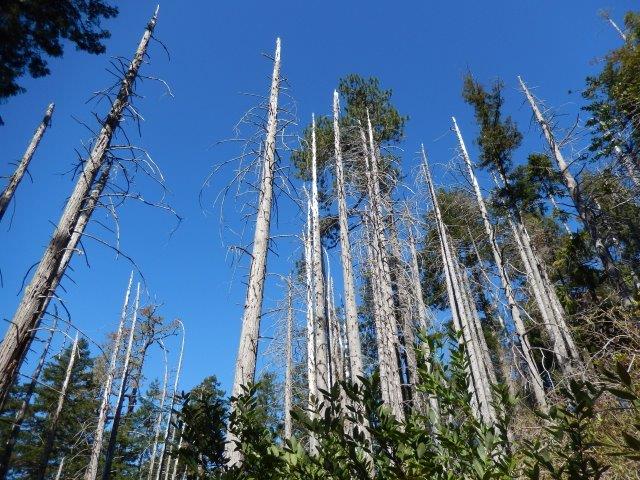
In February the USFS published a lengthy analysis of invasive species: Invasive Species in Forests and Rangelands of the United States. A Comprehensive Science Synthesis for the US Forest Sector (Poland et al. 2021; full citation at the end of the blog). The book is available for download at no cost here.
In a separate blog, I evaluated several aspects of the report as they apply to invasive species generally. Here I focus on invasive insects and pathogens that attack North American tree species (that is, forest pests).
As I said in the separate blog, I doubt that the book will stimulate policy-makers to increase Forest Service resources allocated to invasive species research, much less management. Sections 14.5 and 16.5 of the report state that the continued absence of a comprehensive investigation of the impacts of invasive species, especially the full value of ecosystem services lost, is a barrier to policymakers seeking to develop priorities and realistic management strategies.
I think the book’s editors tried to provide as much information about impacts as possible given existing knowledge. But the book’s length, comprehensive inclusion of all bioinvaders, organizational structure, and the detailed discussions of theories and models reduce the contribution the book might make to management decisions. I did not find “lessons learned” that could be applied in the policy realm.
Chapters address impacts in terrestrial and aquatic systems; impacts on ecosystem processes; impacts on various sectors of the economy and cultural resources; interactions with climate change and other disturbances; management strategies for species and landscapes; tools for inventory and management. Each chapter evaluates the current status of knowledge about the topic and suggests research needs. There are also summaries of the invasive species situation in eight regions.
The choice to organize the book around the chapters listed above means that some information one might expect to find in a book about invasive species is scattered or even absent. This is not a good resource for concise descriptions of individual invasive species and their impacts. That information is scattered among the chapters depending on whether some aspect of the species was chosen to illustrate a scientific challenge or success. The regional summaries partially remedy this problem – but they do not provide perspective on organisms that have invaded more than one region, e.g., emerald ash borer or white pine blister rust. To some extent, information about individual species is provided in the several subchapters on forest insects and pathogens. Or the reader of the PDF version can use the word search function!
Of course, information on several individual high-profile bioinvaders can be found in other publications; see the species write-ups and references posted at www.dontmovefirewood.org. Under these circumstances, a description of invasive species impacts from the ecosystem perspective is a welcome addition. I have long wished for a “crown to root zone” description of invasive species’ impacts.

In this blog, I will focus on issues that the report raises that I found most interesting.
Information in the Report on Invasive Insects & Pathogens that Attack North American Trees
At several places the report states that non-native pests that have the potential to threaten the survival of an entire tree genus should be a high priority (p. 136) (what actions should be prioritized are not specified). They name the emerald ash borer (EAB) and Dutch elm disease. Elsewhere, EAB and hemlock woolly adelgid (HWA) are described as among the most significant threats to forests in the Eastern U.S. While EAB and HWA have certainly received considerable attention from the Forest Service, threats to elm have not. (I regret that the timing of the report precluded reference to Kevin Potter’s priority-setting publication. Potter is not listed as a co-author of the book.)
Hemlock woolly adelgid, emerald ash borer, chestnut blight, white pine blister rust (WPBR), and laurel wilt are cited as examples of highly virulent, host-specific agents that kill dominant, abundant, and ecologically unique hosts (p.18), resulting in exceptionally severe long-term impacts. WPBR and HWA specifically can have profound and far-reaching negative effects on ecosystem structure and function. These can rise to the level of an irreversible change of ecological state (p. 97). Of this list, no federal agency has allocated many resources to efforts to slow the spread of laurel wilt. The Forest Service is certainly tracking its spread and impacts.
Exaggerations or Errors
I think the report exaggerates the level of resources allocated to host resistance breeding. The report mentions programs targetting Dutch elm disease, beech bark disease, EAB, HWA and laurel wilt. It describes programs for white pines and Port-Orford cedar as examples of success. However, I would say that all the programs, except American chestnut, are starved for funds and other resources. The report’s authors concede this on p. 195.

I think the report is too optimistic about the efficacy – so far – of biocontrol agents targeting HWA & EAB. On the other hand, I appreciate the report’s recognition that application of augmentative biocontrol of the Sirex woodwasp is more complicated in North America than in Southern Hemisphere countries (p. 162).
I am concerned about the statement that many plant pathogens are transported, but few have major impact. Examples in the U.S. are said to be WPBR, chestnut blight, and Phytophthora ramorum (p. 97). However, the report does not mention laurel wilt – which has a broad host range; nor rapid ‘ōhi‘a death — which threatens the most widespread tree species on the Hawaiian Islands. Nor does it mention several pathogens attacking single tree species, including beech bark disease, Port-Orford cedar root disease, and butternut canker. The report was written before recognition of beech leaf disease. The report notes that the three diseases it did mention have huge impacts. I am greatly disappointed that the report does not address how scientists and managers should deal with this “black swan” problem other than long discussions of data gaps, and ways to improve models of introduction and spread.
In addition, I am concerned that the discussion of economic factors that influence trade flows and accompanying invasive species (p. 308) focusses too narrowly on inspection alone, rather than other strategies for curtailing introduction. This section also shortens a description of the point made in Lovett et al. (2016). The report notes that Lovett et al. (2016) say that rates of introduction of wood-boring species decreased after ISPM#15 was implemented. However, the report leaves out the major caveat in that paper and the studies by Haack et al. (2014) and Leung et al. (2014) on which it is based: the reduction was insufficient to protect America from damaging introductions! [A further error has crept in: the Haack study explicitly excluded imports from China from their calculations. The Lovett paraphrase is not really clear on this matter.]

Curiosities/Concerns Re: Regional Write-Ups
I wish the sections on the Northwest and Southwest region discussed why areas with so many characteristics favoring introduction of plant pests – major ports, extensive transportation networks, major horticultural industry, extensive agriculture, and abundant urban and native forests – have so few damaging forest pests. (Admittedly, those present are highly damaging: white pine blister rust, sudden oak death, Port-Orford cedar root disease, pitch canker, balsam woolly adelgid, larch casebearer, polyphagous shot hole borer (I add Kuroshio shot hole borer), and banded elm bark beetle). The report does mention the constant threat of introduction of the European and Asian gypsy moths. (The Entomological Society of America has decided to coin a new common name for these insects; they currently to be called by the Latin binomial Lymatria dispar). The report notes that 22 species of non-native bark and ambrosia beetles have recently been introduced in the Southwest.
The report cites a decade-old estimate by Aukema et al. (2010) in saying that a small proportion of introduced pest species has killed millions of trees or pushed ecologically foundational species toward functional extinction. The figure was 14% of the more than 450 non-native forest insect species. I greatly regret that overlapping preparation and publication periods precluded inclusion of data from studies by Potter, Guo, and Fei. http://nivemnic.us/what-fia-data-tell-us-about-non-native-pests-of-americas-forests/
Section 7.3 of the report discusses frameworks for setting priorities. It identifies five factors: 1) pest species having the greatest negative impacts; 2) uniqueness of the affected ecosystem or community; 3) state of the invasion in space and time; 4) management goals; 5) availability of effective tools. Examples of species meeting these criteria include EAB and Dutch elm disease (pest threatens entire host genus); white pine blister rust on whitebark pine (key species in a system with low arboreal diversity).
The report notes increasing understanding of critical aspects of several important pests’ biology and host interactions – but it does not sufficiently acknowledge the decades of effort required to achieve this knowledge. The time required for additional scientific advances will probably be equal or greater, given falling number of “ologists” in government and academia.
I appreciate inclusion of a discussion (Sections 8.3.1 and 8.3.2) on breeding trees resistant to introduced pests

This section states that host resistance, forest genetics, and tree improvement might be the most effective approaches to managing many established pests. The section says such breeding does not require the use of genetically modified organisms, although transgenic or gene editing technologies can provide useful tools. I appreciate the report conceding that necessary infrastructure and expertise has been declining for two decades (p. 195).
In discussing international cooperation to reduce transport of invasive species, the report refers to increasing availability of data allowing identification of potentially damaging species in their regions of origin. Again, since this chapter was written, the Forest Service has increased its engagement on this approach: the USFS International Program is supporting sentinel plantings managed by the International Plant Sentinel Network (http://www.plantsentinel.org) … see my recent blog here.
SOURCE
Poland, T.M., P. Patel-Weynand, D.M Finch, C.F. Miniat, D.C. Hayes, V.M Lopez, editors. 2021. Invasive Species in Forests and Rangelands of the United States. A Comprehensive Science Synthesis for the US Forest Sector. Springer
Posted by Faith Campbell
We welcome comments that supplement or correct factual information, suggest new approaches, or promote thoughtful consideration. We post comments that disagree with us — but not those we judge to be not civil or inflammatory.
For a detailed discussion of the policies and practices that have allowed these pests to enter and spread – and that do not promote effective restoration strategies – review the Fading Forests report at http://treeimprovement.utk.edu/FadingForests.htm